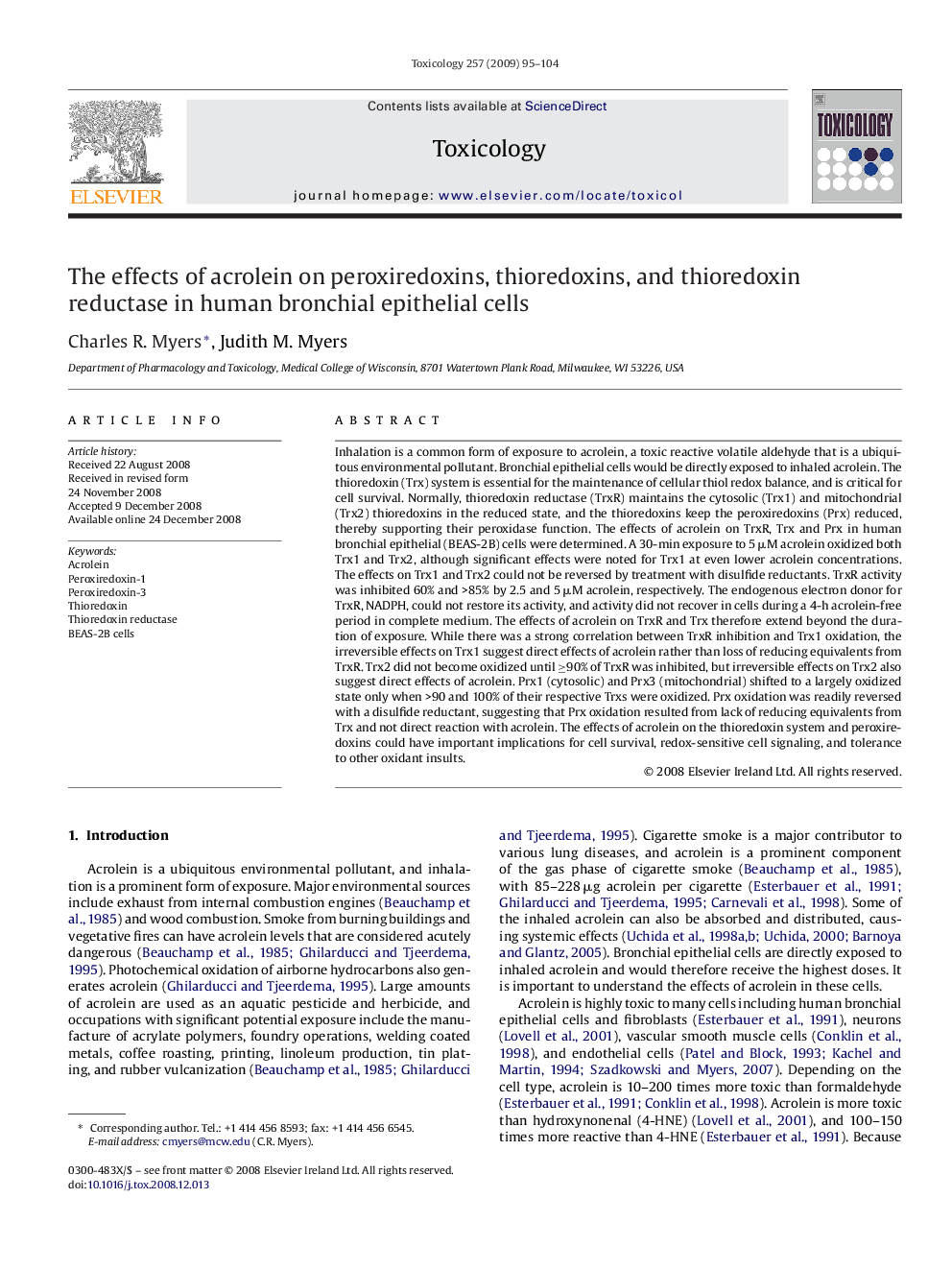| کد مقاله | کد نشریه | سال انتشار | مقاله انگلیسی | نسخه تمام متن |
|---|---|---|---|---|
| 2596832 | 1562398 | 2009 | 10 صفحه PDF | دانلود رایگان |

Inhalation is a common form of exposure to acrolein, a toxic reactive volatile aldehyde that is a ubiquitous environmental pollutant. Bronchial epithelial cells would be directly exposed to inhaled acrolein. The thioredoxin (Trx) system is essential for the maintenance of cellular thiol redox balance, and is critical for cell survival. Normally, thioredoxin reductase (TrxR) maintains the cytosolic (Trx1) and mitochondrial (Trx2) thioredoxins in the reduced state, and the thioredoxins keep the peroxiredoxins (Prx) reduced, thereby supporting their peroxidase function. The effects of acrolein on TrxR, Trx and Prx in human bronchial epithelial (BEAS-2B) cells were determined. A 30-min exposure to 5 μM acrolein oxidized both Trx1 and Trx2, although significant effects were noted for Trx1 at even lower acrolein concentrations. The effects on Trx1 and Trx2 could not be reversed by treatment with disulfide reductants. TrxR activity was inhibited 60% and >85% by 2.5 and 5 μM acrolein, respectively. The endogenous electron donor for TrxR, NADPH, could not restore its activity, and activity did not recover in cells during a 4-h acrolein-free period in complete medium. The effects of acrolein on TrxR and Trx therefore extend beyond the duration of exposure. While there was a strong correlation between TrxR inhibition and Trx1 oxidation, the irreversible effects on Trx1 suggest direct effects of acrolein rather than loss of reducing equivalents from TrxR. Trx2 did not become oxidized until ≥90% of TrxR was inhibited, but irreversible effects on Trx2 also suggest direct effects of acrolein. Prx1 (cytosolic) and Prx3 (mitochondrial) shifted to a largely oxidized state only when >90 and 100% of their respective Trxs were oxidized. Prx oxidation was readily reversed with a disulfide reductant, suggesting that Prx oxidation resulted from lack of reducing equivalents from Trx and not direct reaction with acrolein. The effects of acrolein on the thioredoxin system and peroxiredoxins could have important implications for cell survival, redox-sensitive cell signaling, and tolerance to other oxidant insults.
Journal: Toxicology - Volume 257, Issues 1–2, 4 March 2009, Pages 95–104